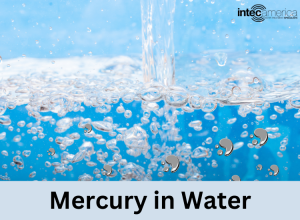Understanding the Impact of Mercury in Drinking Water: Causes, Effects, and Prevention Strategies
Mercury is a metallic element that remains in liquid form even at room temperature. It is used to manufacture a wide range of products, such as thermometers, fluorescent bulbs, etc. Unlike other metals, mercury has many unique properties and is very toxic metal and can cause several life-threatening diseases. Similar to other harmful contaminants such as arsenic, nitrates, and lead, mercury may also be present in drinking water. The most common contamination source of mercury for humans is found in drinking water. Therefore, mercury in water can be dangerous to human health. Consequently, it is important to ensure the water is purified and filtered. There are various methods used for removing mercury from water. Are you intrigued to know what they are? If yes, read the post below. This post introduces you to different causes, effects, and prevention of mercury in water.

How Does Mercury Enter the Water?
There are several sources from where mercury can eventually enter water sources. The following are the most common ways through which mercury enters the water:
- Atmospheric deposition like snow, gases, rain, dry particles, and so on
- Direct discharge of industrial waste in water bodies
- Release of mining waste in the water
- Particles generated from volcanic eruptions
- Coal-fired power plants
- Burning of fossil fuels
- Various electronic devices like batteries, fluorescent lights, thermostats, and so on.
How to Detect the Presence of Mercury in Water?
Researchers have developed various types of tests that easily detect the presence of mercury in water. Primarily, water is tested in laboratories by professionals. Also, mercury-contaminated water can be tested at home with the help of water testing kits. So, if you doubt that your water contains mercury, buy a water testing kit and follow the steps given below:
- Take a cup filled with water.
- Dip one test strip in the water, remove it and wait for a few seconds.
- Now, match the strip color with the color reading strip. The reading should be 0.002 mg/L or less.
- Treat the water according to the mercury content using an appropriate filtration system.
Impact of Mercury on Human Health
Mercury is a toxic metal that may cause serious health problems. Primarily, mercury affects the development of the fetus in the uterus and at an early age. Some of the major health issues caused by mercury-containing water are as follows:
- Hearing problems
- Vision problems
- Muscles weakness
- Cerebral palsy in newborn babies
How to remove microplastics from drinking water?
Many water treatment systems on homes lead the end user to fel their water is safe. However, most cannot remove mercury and toxic chemicals present in water. You can rely on the following water treatment options for removing mercury and other minerals:
- Reverse Osmosis: Commonly called RO, reverse osmosis works on the basis of osmotic pressure, which moves the water across a semipermeable membrane. This membrane is forced to block large ions, including toxic metals like lead and mercury. Reverse osmosis is a reliable treatment option that can be used for residential as well as industrial applications. They are available in small to large sizes and can be installed at points of use as well as point of entry.
- Distillation: As the name suggests, heat is applied to water to change its state to a vapor/gas, were the gas cools and condenses through a series of tubing. Most impurities are left behind. This is a very slow and expensive method
- Electrodeionization (EDI): This technology has been around for a few decades. However, it is becoming more efficient and soon it will be packaged for reliable residential application. An electric charge is applied to a membrane which attracts cations and anions in water which removes contaminants. It is cost prohibitive today compared to other treatment options.
- Ultrafiltration/Carbon Filters: This is a two part process where water is pushed through perforated nanotubes or a thin membrane which effectively rejects particles below 0.02 microns. The second stage utilizes granular activated carbon (GAC) which effectively absorbs harmful metals like mercury and other chemical contaminants.
Health safety must always be the topmost priority. Many diseases spread from waterborne contaminants. Therefore, drinking safe water free from contaminants and mercury is important. If you are looking for a water filtration system to get mercury-free water, then you must opt for a high-quality water filtration system and reverse osmosis is suggested. Cation exchange is just not as effective as those technologies mentioned above. Regardless of the treatment option, many end users opt for further treatment using carbon filters or UV disinfection systems. In addition, while purchasing any filtration system, ensure that you source it from a trusted and reliable manufacturer. After all, it’s about health and safety. Intec America is one of the leading manufacturers of water filtration systems in the USA. The company has commercialized a NASA-developed water treatment system and offers a wide range of safe and cost-effective water treatment technologies.
In addition, they provide high-quality water filters, including reverse osmosis systems, UV disinfection systems, carbon filters, whole house and point of use (PoU) systems, and many more. You can get in touch with the team at Intec-America to know more.


